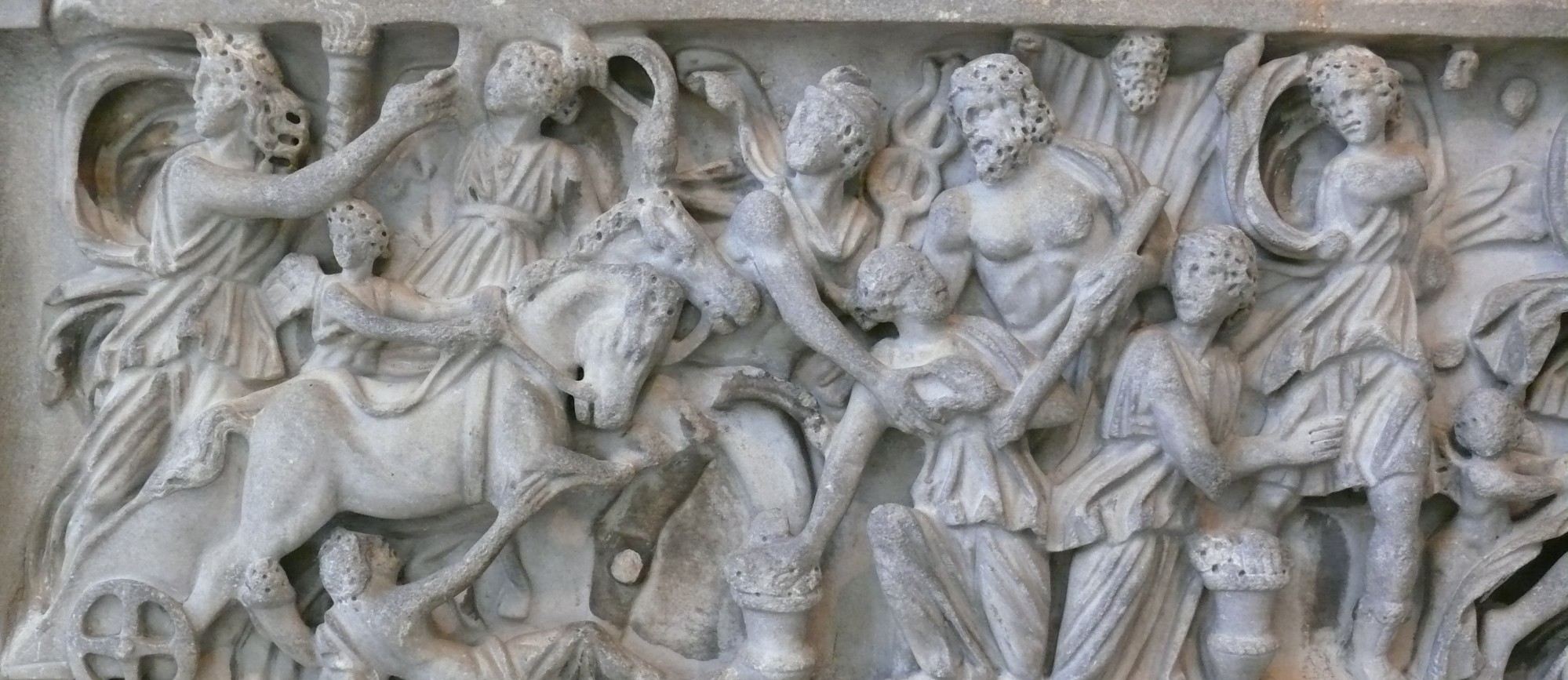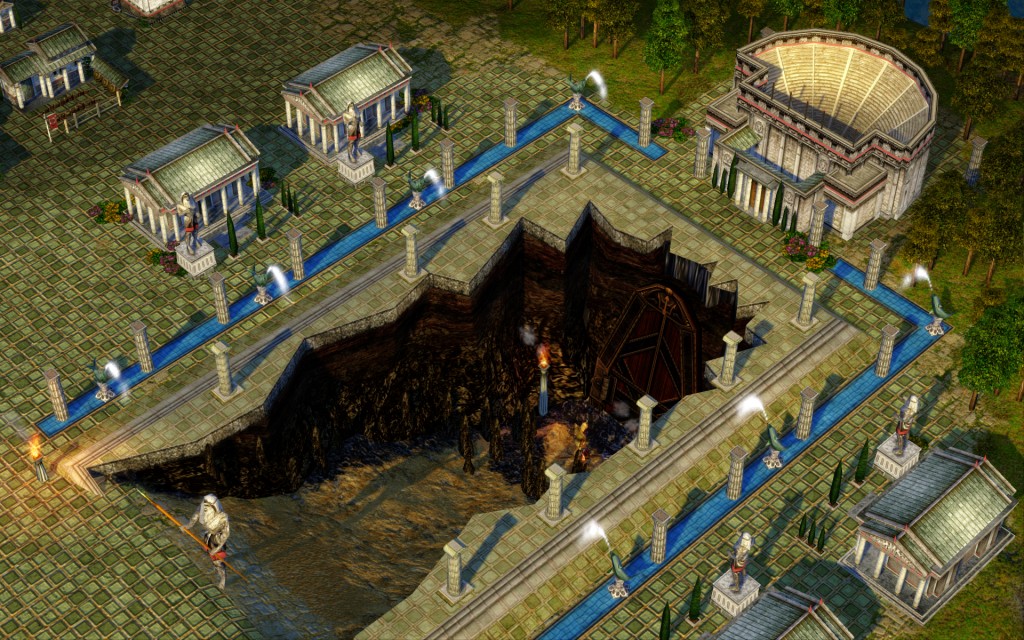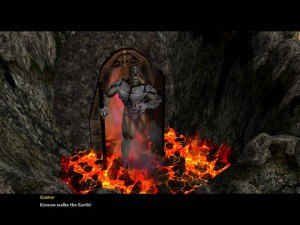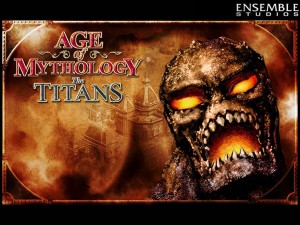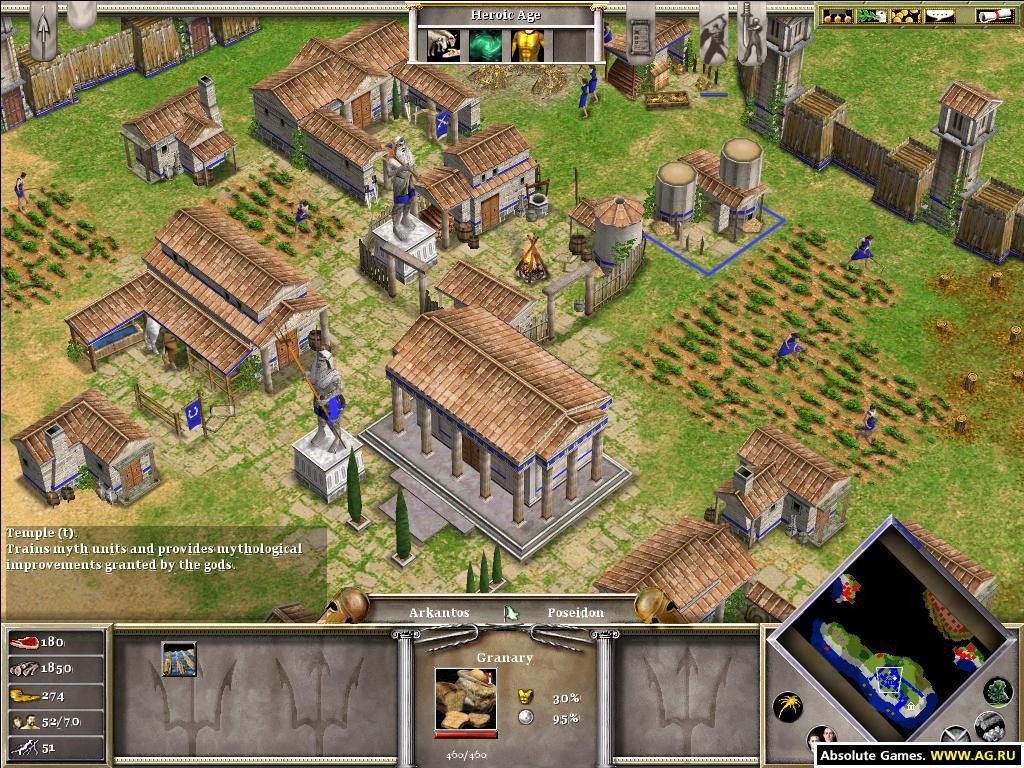The modern adaptation I’ll be using is the videogame Age of Mythology, a strategy game (that stole a fair chunk of my childhood) in which you try to destroy your opponents as one of four civilizations inspired by a combination of history and mythology: Norse, Egyptians, Greeks (worshipping the Olympian gods), and Atlanteans (worshipping the Titans). The strategy portion of the game requires you to manage resources, build buildings, and control armies to beat your enemies. The myth portion comes from the fact that it incorporates mythology into the game-play in different ways: you choose which gods from your culture’s pantheon to worship, and depending on your choices get access to different “god powers” (such as striking down an enemy unit with one of Zeus’ lightning bolts), mythical upgrades (like stronger weapons from Ares), mythical heroes (like Ajax and Odysseus) and specific “myth units” (like centaurs). So basically if you’ve ever wanted to see who would win in absurd mythical face-offs like Heracles vs. Polyphemus, the Hydra vs. a Norse frost giant, or Scylla vs. the Kraken, then this is the game for you. The way these mechanics are implemented plays with and disregards myth in interesting ways: for example, myth units are summoned with a resource called “favor” from your temples, so that here the monsters of myth are seen as being gifts to human civilization from the gods (and consequently fighting alongside human soldiers) instead of the strange product of divine/monstrous mating and a subsequent threat to human civilization. However, rather than discussing broad connections like this, I’m going to focus on the story the game presents through two different campaigns (made up of a series of missions, each of which advances the plot when you win) about an attempt to free the Titans and overthrow the Olympians.

A Greek army (including siege towers, hoplites, a few minotaurs, and some hydras) attacks enemy fortifications.
In the first campaign you play as Arkantos, an Atlantean (here they worship Olympian gods rather than Titans) admiral who goes from fighting alongside the Greeks in the Trojan War to discovering a conspiracy to free the Titans. This enemy force is trying to uncover entrances to the Underworld so that they can find the adamantine gates of Tartaros, which they then try to break through with a giant battering ram. For some reason these gates are scattered all over the world, leading Arkantos (and various friends he makes along the way, including Ajax and Chiron) on a journey through Greece, Egypt, and Scandinavia, trying to fight their way through each region’s mythology. This adventure ends in Atlantis, as it turns out that one of the gates to Tartaros is implausibly buried right under the city. Moreover, you discover that the driving force behind this pro-Titan conspiracy is actually Poseidon, your former patron-god, forcing you to use Zeus’ help to finally defeat these enemy forces (including a living statue of Poseidon serving as that god’s avatar) to keep the Titans locked beneath the earth. Unsurprisingly, this ends with the cataclysmic destruction of the island of Atlantis, which is left uninhabited and devastated by storms.
The second campaign picks up ten years later with the Atlantean survivors, one of whom is Arkantos’ son Kastor, struggling to survive outside of their former homeland. Cronos sends a shape-shifting servant to impersonate the Atlantean ruler, and so manages to lead them to long-abandoned temples built to honor the Titans. Feeling abandoned by the Olympian gods, the Atlanteans begin worshipping the Titans, and so find themselves at war with the Greeks. Still being manipulated by Cronos’ servant, the Atlantean army (led by Kastor) ends up on Mount Olympus, where their destruction of the Olympians’ temples begins releasing the Titans (for some reason), starting with Prometheus. Aided by Arkantos’ old friends and Arkantos himself (who was rewarded for his actions in the former campaign with apotheosis), Kastor manages to defeat Prometheus and end his destruction of the Greek countryside.
He then follows Cronos’ servant to the old island of Atlantis, where the gate to Tartarus is finally opened and Cronos escapes. However, Kastors manages to stop him by summoning Gaia to fight him, re-imprisoning Cronos in Tartarus and leaving the Olympians safe from the threat of the Titans.
Ridiculous as the story is (though probably more fun and definitely more memorable for its absurdity), it still has a number of interesting parallels with real Greek myths. In part this comes through specific references in certain missions: for example, as mentioned earlier you help the Greeks win the Trojan War, later you end up freeing Odysseus from Circe’s island (first having to navigate after having been turned into a boar), and in the second campaign you can find Polyphemus’ cave during one of the missions (complete with an angry Polyphemus to fight and sheep you can steal for food). While these twists on well-known myths are somewhat interesting, I’m more interested in exploring the game’s depiction of the Titans. In making the Titans the villains, trying to get out of Tartarus to take power back from Zeus, the game follows a framework popular in modern adaptations of Greek myth (other examples include the Percy Jackson series and the Hercules Disney movie). However, interestingly I didn’t find this model in the actual myths themselves, as the real Titans were both simpler and more complicated than the newer counterparts they’ve inspired.
For starters, despite being depicted as evil in the game, they seem to have held a paradoxical role as both evil schemers and beneficent rulers of a utopian Golden Age. Though one might expect to find these dual roles split among multiple sources, with different authors interpreting them differently (or inheriting separate traditions), this ambiguity exists even within Hesiod’s work. In the Theogony Cronos is introduced as Gaia and Ouranos’ “most terrible child… an arch-deceiver” (135), certainly giving a pretty loaded, almost Satanic, introduction. This impression is bolstered later when Gaia asks her children to plot against Ouranos, as Cronos agrees not out of love for his mother or a desire for justice, but because his “mind worked in strange ways” (136). This tendency towards amoral scheming continues as he famously tries to devour all of his children to avoid the prophesied succession cycle, which certainly doesn’t cast him in a particularly good light since eating babies seems kind of evil.
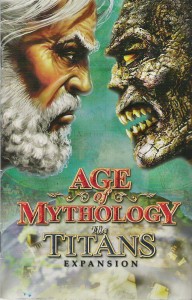
Zeus and Cronos settle their differences with a staring contest.
That said he also doesn’t really seem to be any worse than Zeus, who does pretty much identical things to stay in power but is never described by Hesiod with the same morally-loaded descriptions. Both rose against their fathers for what seem like fairly good reasons, despite the power-grabbing aspect. Furthermore, though Cronos’ appetite for babies may not do much to endear him to the audience, it’s notable that Zeus’ first act as king was to marry Metis for the sole purpose of devouring her. Given these similarities, it’s somewhat unclear exactly why Zeus should be seen as the hero and Cronos the villain, besides an arbitrary preference for maintaining the Olympian status quo.
However, Hesiod’s picture of the Titans gets even more complicated when recognizing the fact that they also seem to have had a role as venerable rulers of a better age, allowing people to live in utopian bliss entirely different from the hardships endured under the Olympians. In the Works and Days, Hesiod describes a Golden Age of carefree people who “lived when Cronos was king of the sky” (164). This association between Cronos and a blissful existence is further cemented by Hesiod’s claim that Heroes living on the Isles of the Blest do so under Cronos’ rule, “For the Father of gods and men has released him/ And he still has among them the honor he deserves” (166). These connections appear to promote an underlying message that human life is better under Cronos than under Zeus, certainly a strange claim to make given Hesiod’s praise for Zeus throughout his work. Furthermore, the sentence about the Isles of the Blest even implies that Zeus and Cronos have reconciled to some extent, and further makes the claim that Cronos deserves a certain level of honor and worship. This stands in stark contrast to the game’s depiction of him, in which he is a monster who should be avoided at all costs, forever at war with Zeus. An even more extreme view of Hesiod’s positive interpretation of Cronos is put forward by Diodorous, a Sicilian writing around six centuries after Hesiod and trying to fit myths into a rationalistic history of the universe. In his account, Cronos “made all the people he ruled change from a primitive to a civilized lifestyle… He introduced to all the notions of justice and genuineness of spirit… All those who were subject to his leadership lived a blessed life and enjoyed every pleasure without hindrance” (97). This picture is completed with his account of an alternative myth to the violent succession cycle, as “some say that… Zeus received the kingship not be overcoming his father with force, but by lawfully and justly being deemed worthy of this honor” (99).
The one thing that seems perfectly consistent between the game’s Titans and the real myths is their evocation of the fragility of Zeus’ reign. Though the mythical Titans may not have been an ongoing threat to Zeus in the way the game makes them, Zeus still had plenty to worry about. The game’s use of Poseidon is a nice nod to the scene we read in the Iliad in which he and Zeus very nearly end up at war, demonstrating the dissension Zeus faced among the other gods. Furthermore, despite not having to worry about older generations, Zeus constantly had to fear a potential new generation even more powerful than himself. The Homeric Hymns demonstrate this in their depiction of an angry Hera, in which she decides to get back at Zeus for birthing Athena without her by calling on “Gaia, and wide Ouranos above, and you gods called Titans” to “give me a child apart from Zeus… stronger than he, as much as far-seeing Zeus is mightier than Cronos” (184). While the invocation of the Titans is interesting, her plan here is to produce a new threat to Zeus rather than to try to free old enemies too weak to actually beat him. Though the Titans’ role as threats to Zeus even after their defeat might be an essentially modern invention, they effectively evoke the surprising fragility of Zeus’ continued rule that formed a central element to many myths.
I provided a links to my post and a brief discussion as to the connections between mine and the other one in the comments of that post. For the sake of convenience, I’m also linking those posts here, so that you can more easily access those discussions.
http://pages.vassar.edu/grst-202-52-2015b/2015/05/02/the-minotaur-immortals-and-the-myth-of-theseus/
Diodorous of Sicily, Hesiod, and Homeric Hymns from Anthology of Classical Myth, ed. Trzaaskoma, Smith, Brunet (Hackett 2004).
The Essential Homer, trns. Stanley Lombardo (Hackett 2000).
Age of Mythology, developed by Ensemble Studios, published by Microsoft Game Studios, 2002.
